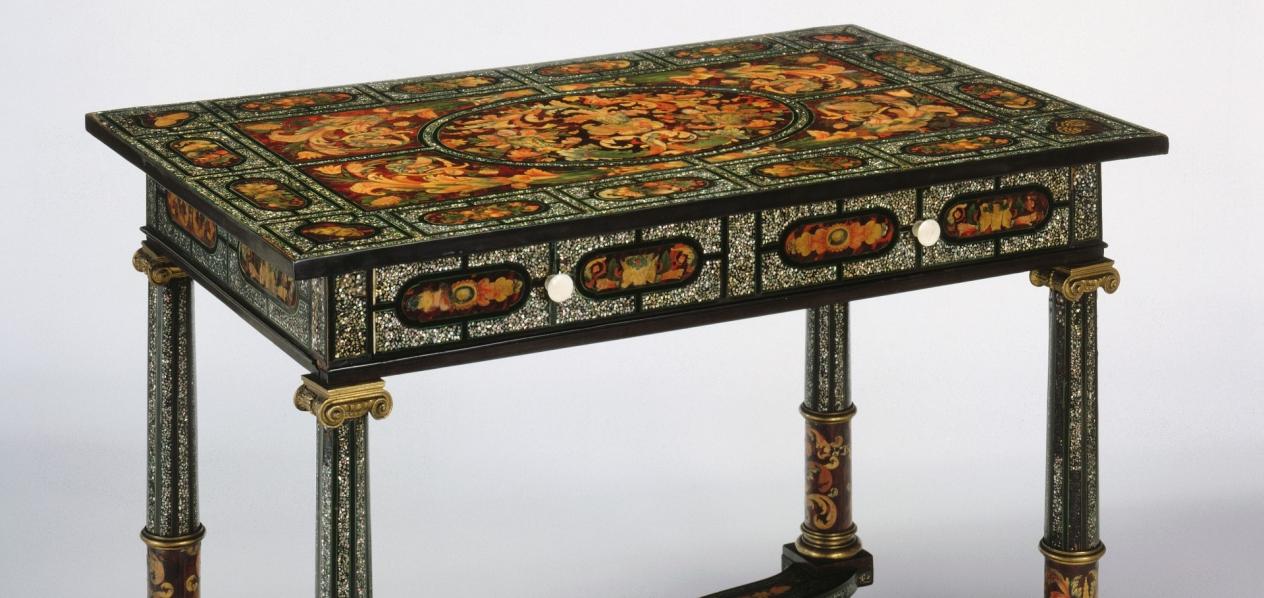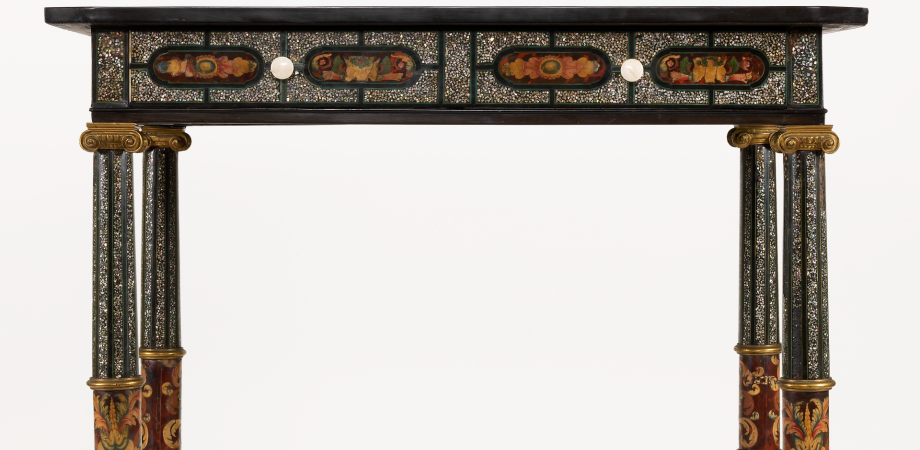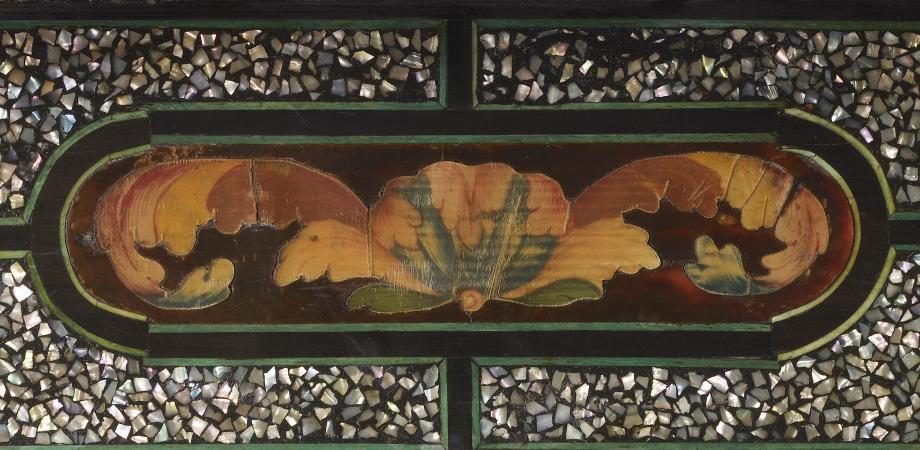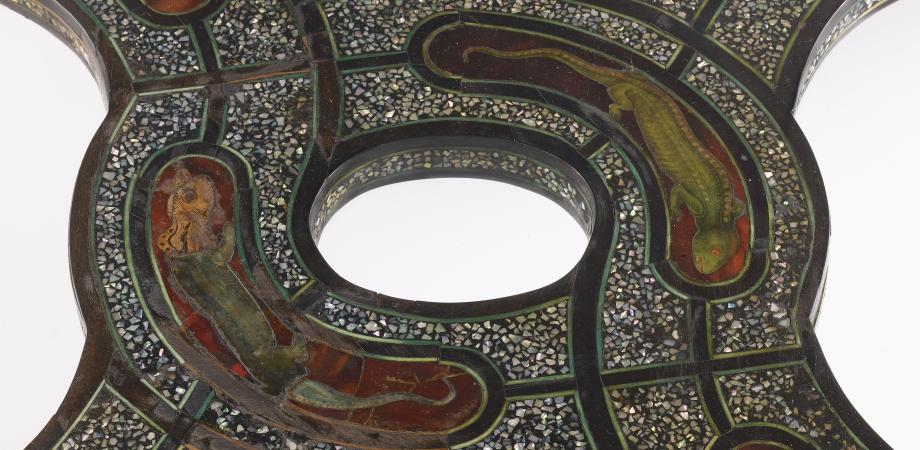
Table with colourful inlay
Pierre Gole (around 1620-1684)
France, Paris, 1663
Ebony, bone, pearl varnish, tortoise and painted paper under horn, on a core of softwood and oak, ivory and gilded bronze
MAS, Smidt van Gelder Collection, Sm.0720
Bequest from Pieter Smidt van Gelder, 1956
Royal jewellery table
This is one of the most important pieces of furniture in public ownership in Belgium. Moreover, it is not often the case that we know the story of how such a piece of furniture came to be. The Dutchman Pierre Gole made the exceptional ceremonial table for the castle of Vincennes, as commissioned by Louis XIV himself. Gole settled in France with his three brothers at a young age. There was a market for luxury products there. There, he was appointed Maître Menuisier and Ebène ordinaire du Roi and was given a workshop at the Manufacture Royale des Meubles de la Couronne, better known as Manufacture des Gobelins, in 1662. One year later, he made this table, which was described in detail in an inventory from 1673. From this, we know that Gole received 620 pounds for it.
Gole masterfully combined two techniques: marquetry and lacquerwork. The table's surfaces is divided into compartments, with narrow ebony edgings and green-tinted bone. Each compartment is filled with a red turtle shell and all manner of motifs: flowers and fruit, butterflies and salamanders, masks and jewels. They are drawn on paper under a transparent layer of horn, which is unique in Gole's work. Around them, he applied laque burgauté, a special technique from Japan where small pieces of mother of pearl (burgau) are contained in a black lacquer base.

Frontal view

Detail floral pattern

Detail salamanders at base



